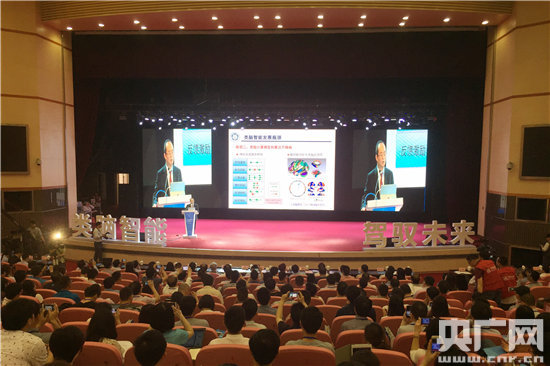Beijing promotes culture under B&R Initiative
|
The Mutianyu section of the Great Wall in Huairou, a mountainous district in the north of Beijing, capital of China. [Photo by Cui Can/China.org.cn] |
Reporters from home and abroad were invited to visit the International Culture Village of the Great Wall at Mutianyu ahead of the Belt and Road Forum for International Cooperation on May 13, as part of Beijing’s efforts to better demonstrate the capital’s achievements on protecting cultural relics and building beautiful villages.
Attracted by the charm of the Mutianyu Great Wall, lots of foreigners have settled in nearby villages. Located at the foot of the Great Wall, the International Culture Village covers an area of 17.8 square kilometers and consists of four villages—Mutianyu, Beigou, Tianxianyu and Xinying.
The culture village has attracted 30 foreign entrepreneurs to settle down and establish businesses since 2005.
Jim Spear and his Chinese wife Tang Liang run a hotel named “The Brickyard” at the village. Mr. Spear gave an introduction to their design ideas — “enjoy the luxury of simple comfort,” which means getting close to nature and using existing buildings to realize sustainable development.
He also stressed the importance of respecting ancient culture in building new villages. With Spear’s help, local villagers have re-decorated their own houses reflecting a mixture of old and the new, and also East and West. They then rent the houses to foreigners. A unique town with international characteristics has gradually taken shape here.
The Mutianyu Great Wall was built on the ruins of a previous structure from the Northern Qi Dynasty (550-577), becoming a quintessence of the Great Wall developing during the Ming Dynasty (1368-1644). As one of the best-preserved parts of the Great Wall, the Mutianyu section draws masses of tourists attracted by its beautiful scenery and traditional culture. Over 70 percent of visitors come from overseas.
Wang Zhigang, deputy manager of Financial Street Holdings Co.Ltd., delivered a welcome address to visiting reporters, pointing out the importance of the Mutianyu Great Wall in promoting international cultural exchanges, as well as describing efforts to protect ancient cultural relics.
“Under the background of the Belt and Road Initiative, we are going to deepen the historical relic’s development, and to provide a better travel experience for visitors,” he said.

